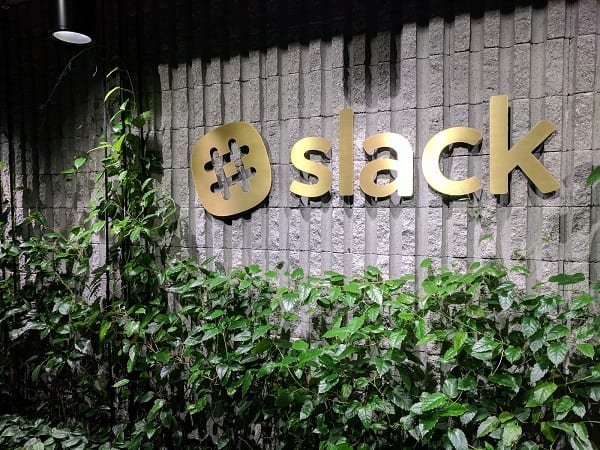In a small startup in Silicon Valley, employee number twenty-three calls a meeting to attention and appraises each person attending the meeting on their progress. The meeting convener jots down these notes and compiles the results in a report. The entire meeting, which involved all twenty-two employees and includes note taking and report compilation takes just five minutes. In another similarly-sized company elsewhere, a similar meeting takes two to three hours. The difference? Employee number twenty-three is a Slack bot.
At a large law firm in upstate New York, a new case has just started, and document discovery has just surfaced one hundred gigabytes worth of documents running into the tens of thousands of individual document files. Using Artificial Intelligence (AI), the law firm narrows this monolithic corpus of documents down to a few hundred, which are then passed on to a small team of legal staff for further analysis. AI cuts this process down from months to just a few days.
What is Workplace Automation?
Workplace automation has been conflated with the apocalyptic rise of the machines. In this misguided perspective, automation replaces entire job groups, rendering millions jobless. While this scenario provides attention-grabbing fodder for headlines, we take a step back from all the hype to take a practical view of what the future of workplace automation looks like.
In a study on workplace automation, McKinsey & Company discovered that while automation was, in fact, gaining prominence in the workplace, the actual role it plays is surprising. Consider that at the rise of the industrial age, farming automation for the most part did away with the need for actual workers out in the field. This dated outlook is what is still informing the current narrative on what can be expected of workplace automation.
Contrarily, McKinsey discovered that instead of replacing entire job groups, automation, in its current form, is only replacing certain activities within job groups. Take the role of a mortgage assessment officer at a bank. Although automation can eliminate the process of mortgage approval from the role, there is still emotion-linked work that cannot be readily automated such as advisory services.
The findings went further to demonstrate that workplace automation will also impact the roles of C-Suite executives besides its impact on lower cadres. For instance, a CEO may have key activities like report analysis and performance evaluations automated, but the role would still be responsible for actioning these insights. Also, a CFO would have most of their routine tasks such as controllership duties that focus on reporting historical financial data automated. However, the executive would still need to spend time on tasks that require high-touch sensibilities such as economic strategy and forecasting as well as exploring investment opportunities.
In general, organizations evaluating whether workplace automation represents a threat, or an opportunity should view it as two sides of the same coin. They must also avoid the notion that workplace automation is achieved through labor redundancies. Instead, the opportunities lie in combining the efficiencies gained from automation with the unique talents of existing human resources.
These insights create a perspective that should provide context to key decision makers within organizations as to how they can reorganize and realign resources to take advantage of this growing trend. To provide greater context, we delve deeper into the specific ways workplace automation will change the face of tomorrow’s organizations.

The Effects of Automation on the Workplace of Tomorrow
Organizations today consider workplace automation as a cost-cutting measure. Most look at savings from reduced labor costs as the primary driver of profits from workplace automation. Using the examples provided at the beginning, it can be inferred that the Slack bot can, in fact, replace the need for an actual staff member while the use of AI to process documents at the law firm can significantly reduce the number of legal staff needed at the law firm. However, looking at workplace automation through this lens is missing the forest for the trees.
Using the findings from the McKinsey report, we can infer a few things about what the automated workplace of tomorrow will look like.
Fewer Activities and More Work
Automation may replace activities and jobs, but not work. This statement offers a long view of work starting from the industrial age and racing into the future. Consider the fact that while automation effectively replaced most humans in the factory and on the farm, the same automation created tremendous opportunities in the service industries that support these very industries.
In the workplace of tomorrow, we see a situation where automation replaces rote, repetitive tasks, empowering workers to spend more time and effort doing meaningful work. For instance, with the Slack meeting bot, employees only need to spend a maximum of five minutes per status update meeting, allowing them additional time to focus on meaningful tasks. This automation of activities will provide the workers of the future with additional time and resources to achieve more throughput for every unit of work done.

Job and Process Redefinition
Within organizations that embrace workplace automation, we see the benefit extending beyond labor savings. While there may be some roles that may be rendered redundant, the threat of entire job groups being done away with is still currently remote. Instead, companies will need to innovatively reorganize their labor, redefine roles and streamline processes to capture the emerging value of workplace automation. Such activities will unlock new levels of productivity, throughput and ultimately profits as organizations become more efficient in how they appropriate resources in the provision of goods and services.
Across-the-board Impact
The third insight we extract from this trend is the wholesale impact workplace automation will have on organizational structures. Starting at the top and running to the bottom, we anticipate a domino effect that as activities are automated, roles and processes within those roles will also change.
Organizations looking to workplace automation for greater opportunities must be willing to use this trend to reshape the entire organization. Focusing only on the bottom of the organizational pyramid will result in a distorted organizational hierarchy that has high efficiency and productivity at the bottom but still lags because of the outdated structures that are retained at the top.
A Workplace Automation Roadmap For Senior Managers
Workplace automation is reshaping the workplace. Many future-facing organizations today have drastically reimagined their workplaces to capitalize on this trend. Consider how BMW has retrofitted their factories to blend a robotic workforce with a human one. Within this setting, efficiencies accrued through automation enhance human worker efficiency, which in turn boosts efficiencies in automation protocols. This positive feedback loop revolves in an ever-expanding circle of increasing productivity, efficiency, and throughput. But how can leaders and key decision makers replicate these gains in their organizations? We see three key areas of importance.
Study the Trends
One of the key aspects of workplace automation is that it is a trend like any other and so can be studied, analyzed, customized, repurposed and replicated within any context. For organization leaders, this means staying abreast of what workplace automation trends are developing in your industry and adjacent industries using resources like McKinsey Research and Springwise.
For example, the use of AI to expedite mortgage approvals can be repurposed within a human resource management context where AI is used to analyze, appraise and grade thousands of employees, allowing HR managers to spend more time cultivating talent rather than sifting through mountains of data. Keeping a close eye on trends can help senior managers recognize and appropriate certain trends within their industries and organizations to their advantage.
Analyze Current Workplace Processes
Organizations like Atlassian have an entire internal team dedicated to workplace automation. A typical job description for a member of this team includes an ability to analyze current activities and processes and seek out automation opportunities. Such teams have access to the entire workplace workflow and constantly experiment within sandbox environments to find ways of enhancing current workforce productivity through automation.
Organizations seeking to benefit from workplace automation must follow suit and create the necessary structures to discover and experiment with disruptive workplace automation opportunities before they emerge in the market and represent a threat to their business model.

Uncouple Labor Replacement from Automation
While the workplace automation narrative principally revolves around labor replacement, managers and CEOs must uncouple their workplace automation strategies from this. Instead, they should approach workplace automation as a productivity strategy that introduces greater efficiencies in current processes and acts as a multiplier for existing human resources.
For example, while it is true that electric vehicles (EVs) being built by Tesla and others have the potential to render the entire gasoline car ecosystem redundant, the trend does hold promise of giving rise to an entirely new EV ecosystem. As it is, car battery manufacturing is a rapidly rising industry, followed closely by other EV ecosystem support industries.
As such, introducing innovative efficiencies in one sector results in the exponential escalation of opportunities in another sector. To this end, it is important for managers and senior executives to avoid looking at automation as merely a labor cost-cutting measure but rather be willing to seek out disruptive and unconventional opportunities that lie within the trend.
The Future Meaning of Work
In a hypothetical dystopian future, machines take over all the jobs. This is worrisome for both senior managers and workers alike. In such a future, the very essence of the human condition, which is creativity and meaning, comes under threat. How will humans live impactful and meaningful lives? While workplace automation seems to be leading up to this bleak future, we see a different future. As automation assimilates rote, repetitive tasks, we see the emergence of more meaningful tasks that humans are best suited to accomplish.
For instance, the rise of automation in the industrial and manufacturing sectors created an inflection point that gave rise to the now-booming service industry. As the service industry also gets automated, we anticipate the creation of entirely new industries and classes of work that provide greater meaning to workers.